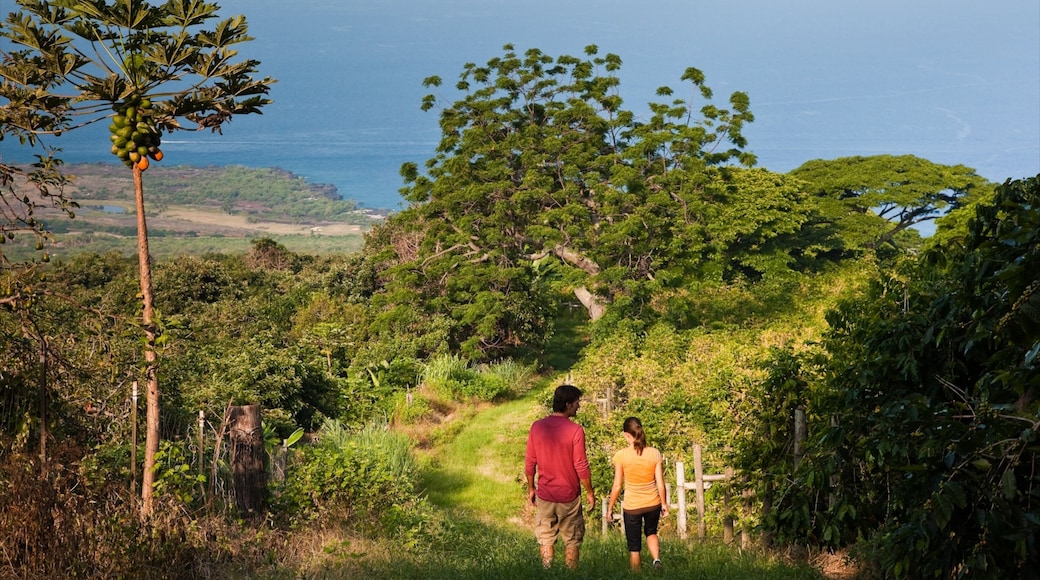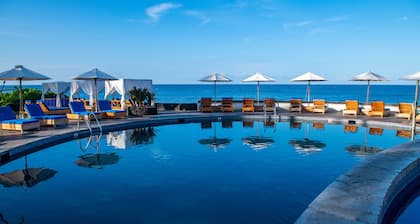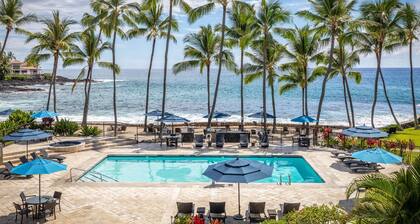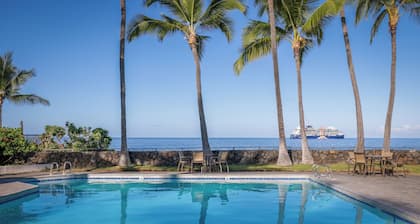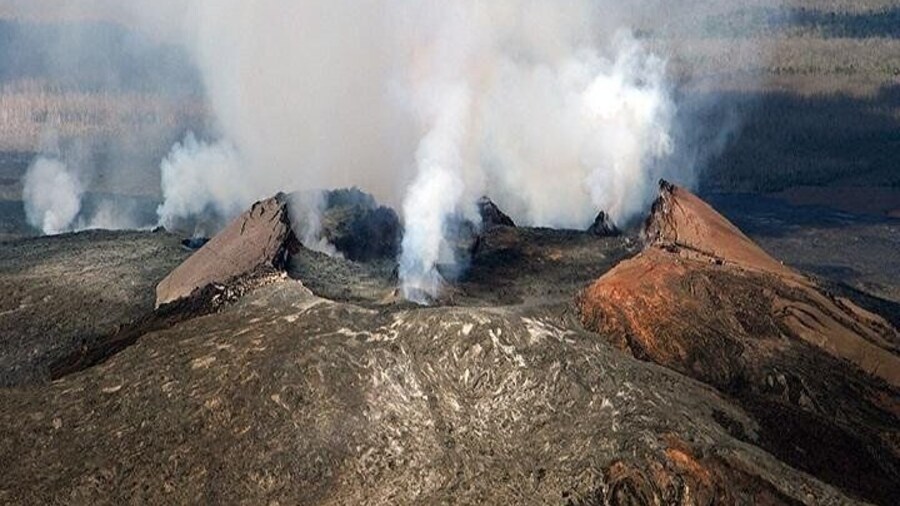Kealakekua is a small village on Hawai’i’s Big Island’s western coast, bordered by the volcanic mountains, Mauna Loa and Pōhaku Hanalei, to the east and the scenic Kealakekua Bay to the southwest. Visit Kealakekua Bay to discover an astonishing underwater world filled with tropical fish and coral and to see a significant historical site on the waterfront.
Kealakekua Bay is a scenic cove naturally protected by the headland that juts out from the village border. The bay is a Marine Life Conservation District and can only be reached by foot, boat or kayak. Hike from the main road and traverse a one-hour trail through volcanic rock and tall grasses down to the cove. Make sure to bring your snorkel gear, plenty of water and good hiking shoes.
Explore the clear waters by snorkeling, scuba diving or kayaking. See schools of tropical sea life and, if you’re lucky, spinner dolphins leaping out of the water.
Find the Kealakekua Bay State Historical Park and a historic monument to the site where British explorer Captain James Cook first landed on the Big Island in the late 18th century. A white obelisk marks the site of his arrival and commemorates his death, which occurred nearby only a year later. East of the bay, find a Hikiau Heiau, or sacred temple, in honour of the Hawai’ian god, Lono.
Back in Kealakekua village, discover the island’s pioneering heritage at the Kona Historical Society and Kona Coffee Living History Farm. This museum presents a fascinating glimpse of ranching life at the turn of the 19th century and explores the history behind Hawai’i’s most revered brew of coffee.
Kealakekua village is 10.3 miles (16.5 kilometres) south from Kailua in the Kona region. The bay is 6.2 miles (9.9 kilometres) farther southeast from the village.
